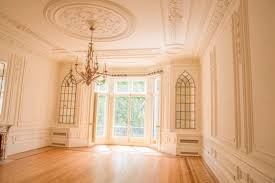
Vredeburg
The most magnificent architectural masterpiece from across the world, according to my extremely perfect opinion, is the one where the first Mughal emperor, Babur stayed in after the first battle of Panipat in 1526 AD. It is the one where his son and the second emperor of the grandeur of the Mughal dynasty, namely Humayun was crowned in 1530. The third emperor who was Jalal ud-din Mohammad Akbar made the beautiful fort get its cultural appearance and true expression. Yes, this is about the Red Fort of Agra also known as the Agra Fort.
To describe the Agra Fort in two words, I would call it a ‘historical fort’. It is a historical fort which used to specifically be the main residence of the Mughal Dynasty Emperors until their central power of capitalism shifted from Agra to Delhi in the year 1638. Then it used to be occupied by the Marathas until the British triumphed over India and captured it as well. Leaving the history aside, the Agra Fort was prestigiously named a UNESCO World Heritage Site.
Circling back to the history and diving into it in detail, Emperor Babur used to stay in the Palace of Ibrahim Lodi in the Agra Fort. As a gift to him, he built a step wall or baoli in the fort. After the coronation of Humayun, Sher Shah Suri managed to valiantly defeat him at a small town called Bilgram in 1540. The Suris were able to have control over the fort for fifteen years till 1555 until Humayun managed to capture it again. The fort was owned by the Jat rulers of Bharatpur for more than 13 years. They built the the Ratan Singh ke Haveli. Then the fort was invaded in the early years of the 18th century by the Maratha Empire. Later on, it changed ownership quite frequently between the Marathas and their foes. After the defeat of the Marathas in the Third Battle of Panipat by Ahmad Shah Abdali in 1761, they remained out of the area for the next decade. The final and the most prominent owner of the fort was Mahadji Shinde. Thereafter, as already mentioned above but for the sake of more details, it was lost for a long time to the British from the Marathas during the Second Anglo-Maratha war in 1803. The scene of battle during the Indian rebellion of 1857 was the great Agra Fort, which caused the completion of the British East India Company’s rule in India and led to a century of direct rule of India by Britain. Also, thirty six people died on the thirtieth of November, 1871 when the cartridge factory exploded in the Agra Fort. Some say that the cries and wails of the humans injured or burned could still be heard some nights in the fort.
The layout of this majestic fort is grand, classy and traditional and is capable of charming any soul. It is carved with red marble sandstone prettier than rubies, which used to be Emperor Akbar’s most loved form of decoration. Its 94 acres has a semi-circular look, its chord lying parallel to river Yamuna and its walls are 70 feet high. Four gates are provided on its four sides, one Khizri gate opening on to the river. The fort has two famous gates namely the ‘Delhi Gate’ and the ‘Lahore Gate’. There are many historic sites inside the Agra Fort as well such as the Jahangir’s Hauz, Shahjahani Mahal, Jahangir’s chain of justice, the Shish Mahal, the Muthamman Burj, the Ghaznin Gate and the Bengali Mahal which is now split into Akbari Mahal and Jahangiri Mahal.
There are several interesting theories related to the Agra Fort. It is said that the brave Shivaji himself came to Agra in 1666 as per the ‘Treaty of Purandar (1665)’ entered into with Jai Singh 1 to meet the sixth Mughal Emperor Aurangzeb in the Diwan-i-Khas. It is believed that he was deliberately placed behind men of lower rank. Insulted, he stormed out of the imperial audience and was confined to Jai Singh’s quarter for the later part of the day. It is a matter of great pride for Indians that this fort was featured in the music video for Habibi Da, a hit song of Egyptian pop star Hisham Abbas. This fort also plays a key role in the popular Sherlock Holmes story called ‘The Sign of the Four’ by Sir Arthur Conan Doyle. My most favourite part about this masterpiece of a fort is that it won the Aga Khan Award for Architecture in 2004. India Post issued a stamp as well to honour and commemorate this event.
I personally feel that the Agra Fort deserves a lot more recognition and respect than it gets as compared to its contemporary monuments (you know I am talking about the Taj Mahal), and I also truly believe that one day people will understand its true value and velour and love it even more. Emperors have come and gone. Legends were born and legends have died. The heroes and the villains have both made so much of difference in the great wars of time and in life, generally. People have managed to their life into their hands and change the hand of destiny oh so ferociously! But eventually, everyone and everything had to take their fated leave. The only thing that has been constant, ever since Babur first moved into it to the time now when we go to Agra to visit it is the AGRA FORT. And it is as grand and beautiful as it always was. If that’s not a miracle, I don’t know what is. The Agra Fort breathes life into the people who have never known it. It has both the ability and the capability to stand tall, when nobody else does and nothing else is able to. After all, and has literally seen everything history in itself has to offer!
By Shreeja Mukherjee, Uttar Pradesh


